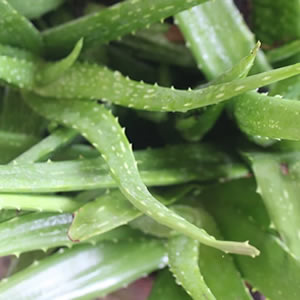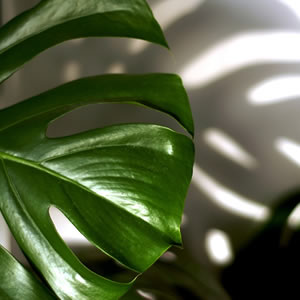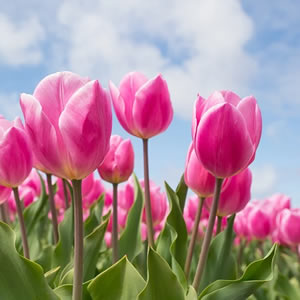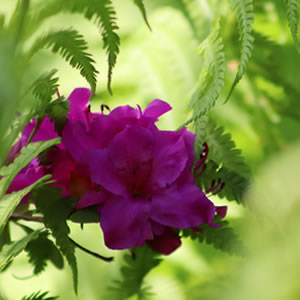
May 14th, 2020 by
One thing we love about spring and summer is seeing all the pretty flowers in full bloom, the colours and scents of our favourite flowers are guaranteed to put a smile on our faces! Have you ever stopped to think, however, if your favourite plants are safe to have around your four-legged friend? A number of the most popular garden and house plants are actually poisonous for dogs and should probably be avoided or kept out of their way if you want to keep your pooch safe and healthy.
The majority of plants and flowers are only toxic to your dog if they consume some, like munching on the leaves or flower heads! Unfortunately for us, puppies like to explore the world with their mouths so it’s more common than you think for dogs to start eating your colourful blooms!
House Plants
Some of our favourite house plants are toxic to dogs, including the following;
 Aloe Vera
Aloe Vera
Aloe Vera is usually known for its health benefits, being an anti-inflammatory and having the ability to alleviate allergic reactions, however the yellow sap found in the plant can cause problems for our pooches. This sap is called aloe latex and contains a natural chemical called aloin. If ingested by our dogs, this can cause electrolyte loss and will irritate the intestines – so keep your aloe plant out of pup’s reach.
Lilies
Lilies are one of the most common flowers used by florists so chances are if you’ve ever been bought a bunch of flowers, you will have brought lilies into your home! Lilies contain colchicine alkaloids which are extremely toxic and cause damage to blood cells, which leads to organ failure and can be fatal if not treated immediately, which is very worrying! Of course, it depends on the type of lily and the part and the amount of the plant your dog has consumed which depends on how severe the health implications could be. The root of a lily contains the most toxins, however if your dog is showing any signs of lethargy, sickness or diarrhoea and you suspect your pooch may have been munching on any part of a lily, it’s best to take them to the vets immediately!
 Philodendron
Philodendron
Philodendron is a climbing plant with bright and shiny green leaves and is fairly low maintenance, which is perhaps what makes it such a popular choice for a decorative house plant! All parts of the philodendron contain insoluble calcium oxalate crystals, which can cause excruciating pain, swelling and irritation of the mouth and gastrointestinal tract if chewed or swallowed. Any swelling of the mouth can cause breathing difficulties and can be fatal if not treated at the vets as soon as possible.
Garden plants
We all like to see our gardens full of colour in spring and summer, but did you know the following aren’t so canine friendly?
 Tulips
Tulips
Tulip plants contain chemicals that are toxic not only to our dogs, but to humans too! These chemicals are called glycosides, and are present all through the plant, from the bulb to the stem, leaves, berries and even the roots. The glycosides lose their sugar molecules when ingested, which is when they become toxic, causing drooling, sickness and diarrhoea.
Daffodils
The bulbs of daffodils are highly toxic to dogs when ingested, so it’s important you never allow your dog to dig up any old bulbs from the garden. Daffodils contain the alkaloid lycorine, which causes sickness, diarrhoea, stomach cramps, and may even lead to your pooch having trouble breathing, kidney failure and can sometimes be fatal. While the highest concentration of the toxins is in the bulb, the rest of the plant is still harmful to dogs, from the roots to the flowers.
 Azalea
Azalea
While azaleas are very attractive flower bushes, they unfortunately can be deadly for dogs, containing cardiovascular toxins which are capable of damaging your pet’s heart – leading to a coma or death. The grayantoxin that is present in azaleas starts to affect their muscle and nerve functions within only a few hours, so must be treated immediately. Any variety of azalea should be avoided for any pet owners – not only are they toxic to dogs but also the majority of other animals and also us humans.
If your dog has eaten any of the above, or consumed a large amount of any plant, it is always important to seek advice from your vet. Try to always keep any house plants out of the reach of puppy paws and teeth, and try to keep any garden plants that you know are unsafe for dogs fenced off so they are unable to get to them. Even if your pooch doesn’t normally try to eat plants, you never know when they might just get the urge to have a little nibble!
Comments
Leave a reply
Your e-mail address will not be published. All fields are required


